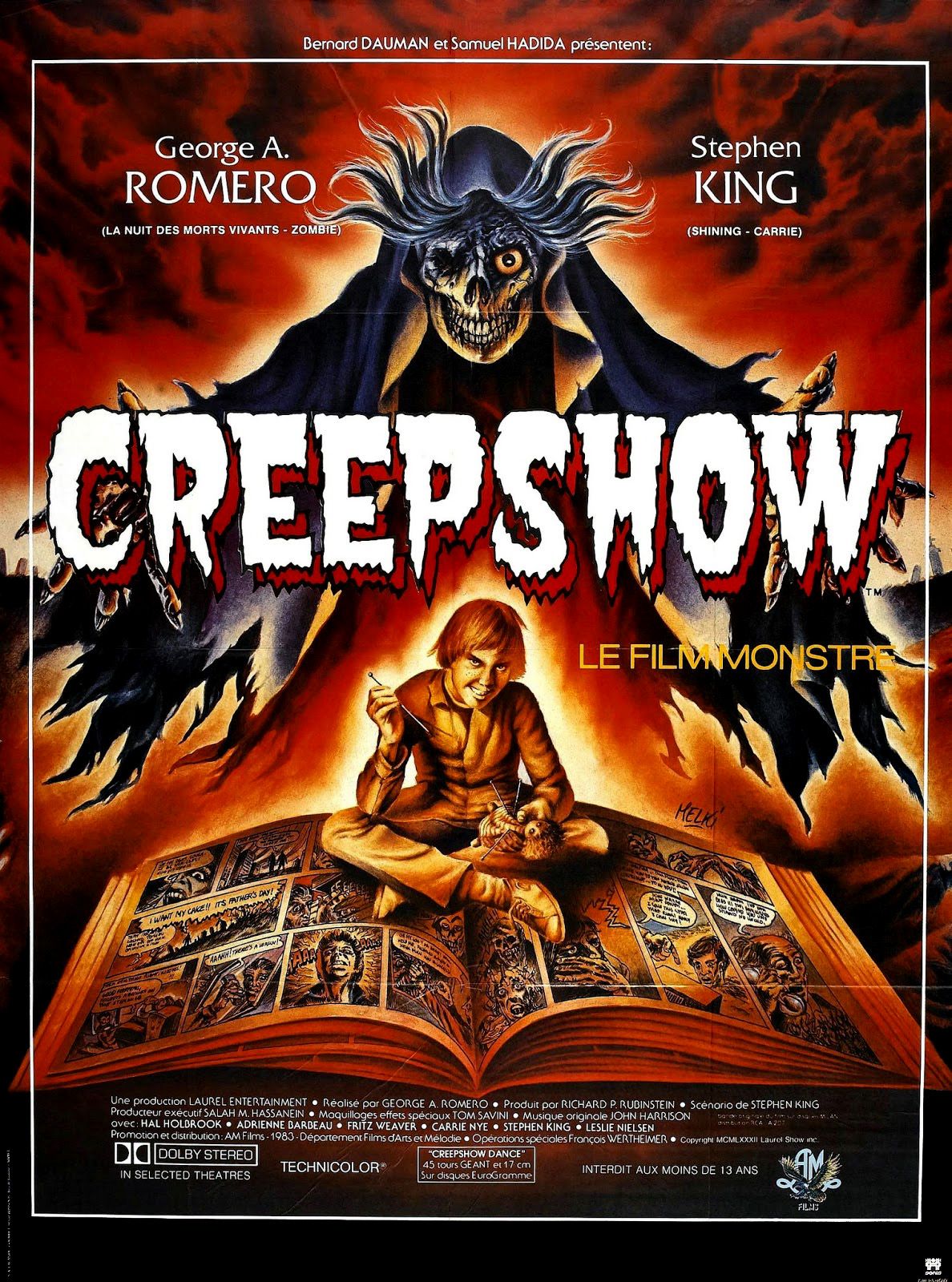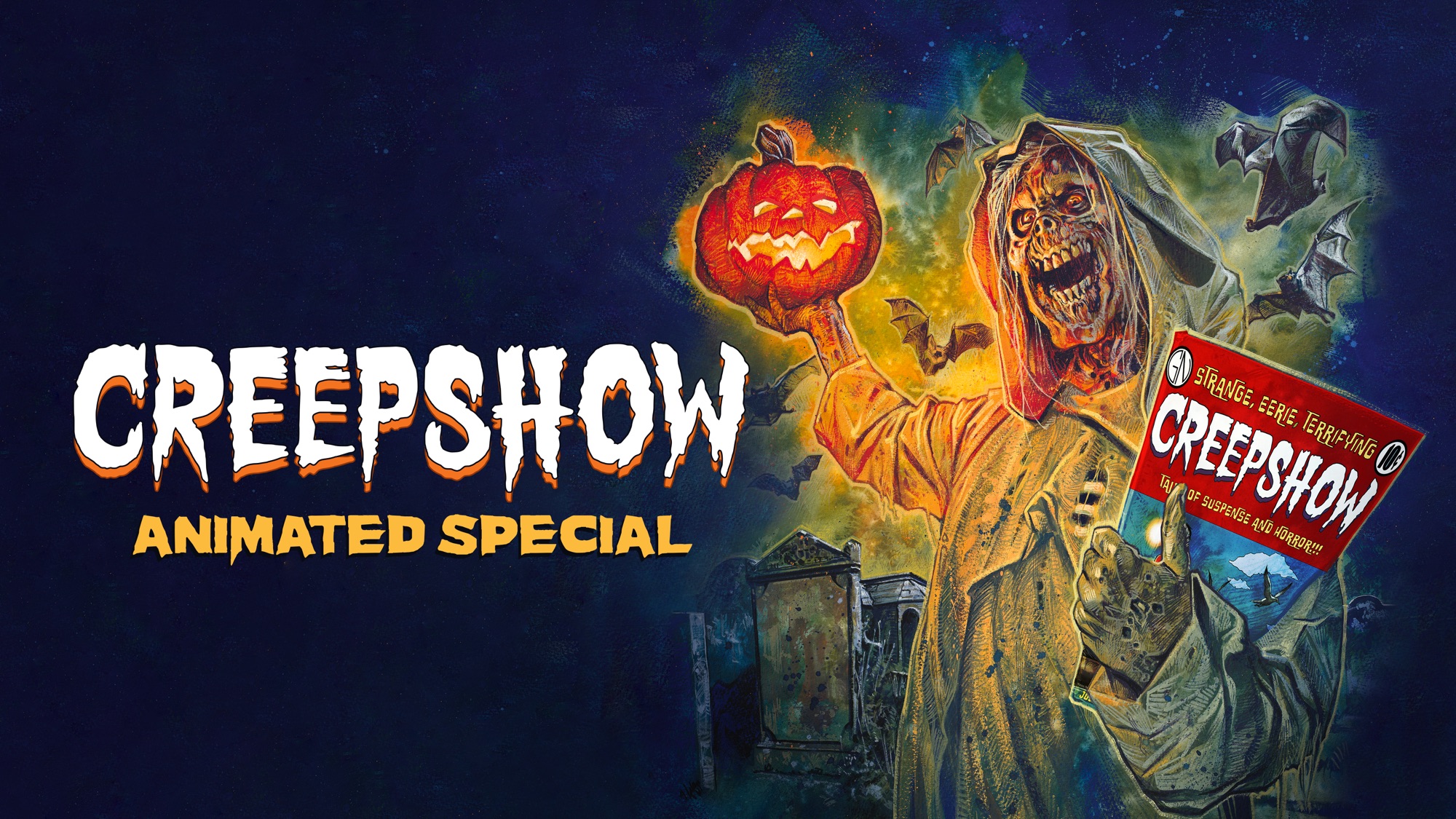Have you ever stopped to truly look at the distinctive visual style of Creepshow? It is that, in a way, truly special. The film, a horror-comedy anthology, burst onto screens in 1982, bringing with it a look and feel unlike much else in cinema. This unique artistic approach is a big part of why the movie, and its subsequent series, still captures imaginations today. So, what exactly makes Creepshow art so memorable, you ask? Well, it's a fascinating story of comic book inspiration meeting cinematic vision.
The original film, as a matter of fact, was a powerful collaboration between two titans of terror: director George A. Romero and writer Stephen King. It was King's first time writing a screenplay, and he brought a particular love for classic horror comics to the project. This deep appreciation for the printed page, with its bold colors and dramatic panels, shines through in every frame of the movie. It’s a visual feast, really, designed to make you feel like you're stepping right into a comic book.
This distinct visual identity, you know, is what makes Creepshow stand out. From the vibrant color schemes to the exaggerated facial expressions and even the transitions between scenes, the art style is an active character in itself. It's not just set dressing; it's the very fabric of the storytelling. And that, quite honestly, is something worth celebrating and looking at a little closer, too.
Table of Contents
- The Roots of Creepshow Art: EC Comics Influence
- Bringing Comic Panels to Life: The Film's Visual Style
- The Creepshow Franchise: Art Through the Years
- Why Creepshow Art Still Matters Today
- Frequently Asked Questions About Creepshow Art
- Looking Closer at the Visual Magic
The Roots of Creepshow Art: EC Comics Influence
The heart of Creepshow art beats with the rhythm of classic EC Comic Books. Stephen King, who wrote the original screenplay, was very much inspired by these thrilling, often shocking, comic anthologies from the 1950s. Titles like Tales from the Crypt and The Vault of Horror were known for their gruesome stories, surprise endings, and a rather distinct visual flair. They were, in fact, quite influential for a whole generation of horror fans.
These comics, you see, had a particular way of presenting their tales. They used vibrant, sometimes lurid, colors and bold lines. The panels themselves would often feature exaggerated expressions and dramatic angles to really pull the reader into the story. It was a very effective way to tell a spooky story, and King wanted to bring that exact feeling to the big screen. That's why the film feels so much like a comic book come alive, so it does.
George A. Romero, the director, understood this vision completely. He worked to translate that comic book aesthetic directly into the film's look. This meant not just telling five grisly tales, but making sure they looked like they were torn right from the pages of a kid's comic book. It’s a loving tribute, honestly, to a bygone era of horror storytelling.
Bringing Comic Panels to Life: The Film's Visual Style
The way Creepshow looks is a deliberate choice, reflecting its comic book origins. Every segment, from "Father's Day" to "The Crate," has visual cues that shout "comic book!" For instance, the use of bright, primary colors is very much like what you'd find on a printed page. You often see reds, blues, and yellows used to create a strong, almost artificial, atmosphere. It's really quite striking, too.
One of the most noticeable elements of Creepshow art is the way the film uses animated transitions. When a scene shifts, you often see comic book panels slide across the screen, or even dissolve into a new frame. This helps to reinforce the idea that you are watching a living comic book. It's a clever trick, and it works wonderfully to maintain the film's unique identity, honestly.
The film also plays with perspective, sometimes showing characters from low angles or extreme close-ups, much like a comic artist might draw a dramatic moment. This helps to build tension and make the viewer feel more involved in the story. It's a very intentional approach to filmmaking, and it gives the movie a visual punch that few other horror films have, even today.
Color and Lighting: A Bold Palette
The colors in Creepshow are anything but subtle. They are bold, sometimes garish, and always purposeful. For instance, in the "Father's Day" segment, the greens and purples create a rather unsettling mood around the decaying corpse. This isn't realism; it's heightened reality, just like a comic book. It makes the horror feel more immediate, almost jumping off the screen, you know.
Lighting also plays a big role in creating the Creepshow art style. Scenes are often lit with strong, theatrical lights that cast deep shadows. This creates a high contrast look that mimics the way light and shadow are depicted in comic book art. It's a very stylized approach, and it adds a lot to the film's overall creepy atmosphere, it really does.
This deliberate use of color and light helps to set the tone for each of the five segments. Whether it's the sickly green glow around Jordy Verrill or the stark, unsettling brightness in "Something to Tide You Over," the visual palette is always working to enhance the story. It’s a testament to the filmmakers’ vision, quite simply.
Character Design and Practical Effects
The characters themselves, including the monsters and victims, are designed with a comic book sensibility. They often have exaggerated features or expressions that would feel right at home on a comic page. Think of the monstrous creature from "The Crate," or the various ghouls that pop up; they look like drawings brought to life. They are, in a way, very much a part of the overall art.
The film's reliance on practical effects also contributes greatly to the Creepshow art style. Instead of relying on computer-generated imagery, the movie uses physical props, makeup, and animatronics. This gives the creatures and gore a tangible, almost rubbery, quality that is very much in line with the visual language of old comics. It just feels more real, in a strange sort of way, too.
Actors like Hal Holbrook, Adrienne Barbeau, Fritz Weaver, and Leslie Nielsen also contribute to this visual style with their performances. They often play their parts with a certain theatricality that matches the heightened reality of the comic book world. It’s a collaboration of performance and visual design, actually, that makes the art so effective.
The Creepshow Franchise: Art Through the Years
The Creepshow franchise, originally created by George A. Romero and Stephen King, didn't stop with the first film. The initial release in 1982 spawned two more films. While the original set a very high bar for its distinct visual identity, the sequels also tried to carry on that comic book feel. It's a legacy, really, that continues to this day.
More recently, the Creepshow universe expanded with an American horror anthology television series that debuted on Shudder in 2019. This series, in fact, serves as a continuation of the 1982 film. It brings the fictional Creepshow comic books to life once more, hosted by the familiar Creep, and features new terrifying tales. The visual style, you know, still leans heavily into those comic book roots.
The Shudder series, starring actors like Carey Jones, Hannah Fierman, Kara Kimmer, and David Alexander Kaplan, continues to use the same vibrant colors, panel transitions, and practical effects that made the original film so visually striking. It’s a conscious effort to maintain the artistic integrity of the franchise. This ensures that even new stories, like Rose finding Champ, the legendary monster of Lake Champlain, still feel like part of the same visual family, so they do.
Why Creepshow Art Still Matters Today
The unique Creepshow art style has an enduring appeal for many reasons. For one, it offers a refreshing contrast to the often dark and gritty aesthetics of much modern horror. Its bright, almost playful, visual approach makes the scares feel different, perhaps a little more fun, but no less effective. It’s a bit like a breath of fresh air, honestly, in the horror genre.
This distinct look also taps into a sense of nostalgia for many fans who grew up with classic horror comics. It’s a visual language that speaks to a particular era of storytelling, and it does so with affection and skill. The film’s ability to transport viewers into that comic book world is, quite simply, a big part of its charm. You can find out more about audience reactions and critic scores for the original film on Rotten Tomatoes.
Furthermore, the artistic choices in Creepshow demonstrate how visual style can be a powerful storytelling tool. It’s not just about what happens in the story, but how it looks. The vibrant colors, the panel transitions, and the exaggerated effects all work together to create a cohesive and memorable experience. It shows how much thought went into every single frame, too it's almost.
The continued popularity of Creepshow, especially with the newer Shudder series, proves that this art style remains relevant and loved. It has a timeless quality that resonates with both long-time fans and new audiences discovering it for the first time. It’s a testament to the vision of King and Romero, and the artists who brought their ideas to life, you know.
Frequently Asked Questions About Creepshow Art
People often have questions about the unique visual identity of Creepshow. Here are some common ones that come up, actually.
What inspired the visual style of the original Creepshow film?
The film's visual style was directly inspired by classic EC Comic Books from the 1950s, such as Tales from the Crypt. Stephen King, who wrote the screenplay, had a deep love for these comics, and director George A. Romero worked to bring that bold, colorful, and panel-driven aesthetic to the screen. It's very much a homage, in a way, to those old comic books.
Who was responsible for the art direction in Creepshow?
While George A. Romero directed the film and Stephen King wrote it, the overall visual style was a collaborative effort. Production designers and cinematographers worked to translate the comic book vision into live-action. This included careful use of color, lighting, and special effects to achieve that distinct look. It was a big team effort, really, to make it all come together.
How does the Creepshow TV series continue the original film's art style?
The Shudder TV series, which is a continuation of the 1982 film, consciously maintains the original's art style. It continues to use vibrant, often exaggerated, color palettes, animated comic book panel transitions, and a strong emphasis on practical effects for its creatures and gore. This helps new stories feel connected to the original film's visual identity, so they do. Learn more about horror anthologies on our site.
Looking Closer at the Visual Magic
The Creepshow art style is a wonderful example of how film can draw inspiration from other mediums and create something truly special. It’s more than just a horror film; it’s a living, breathing comic book that scares and entertains in equal measure. The careful attention to detail in its visual presentation is what makes it so enduringly popular, even decades later. It just keeps on giving, honestly, to fans of horror and unique visuals.
So, next time you watch Creepshow, take a moment to really appreciate the colors, the transitions, and the way the characters look. You’ll see how much thought went into making it feel like a classic horror comic brought to life. It’s a visual treat that holds up, and it’s a big part of why the franchise continues to thrill audiences. You might even find yourself wanting to explore more classic horror film aesthetics after seeing it.



